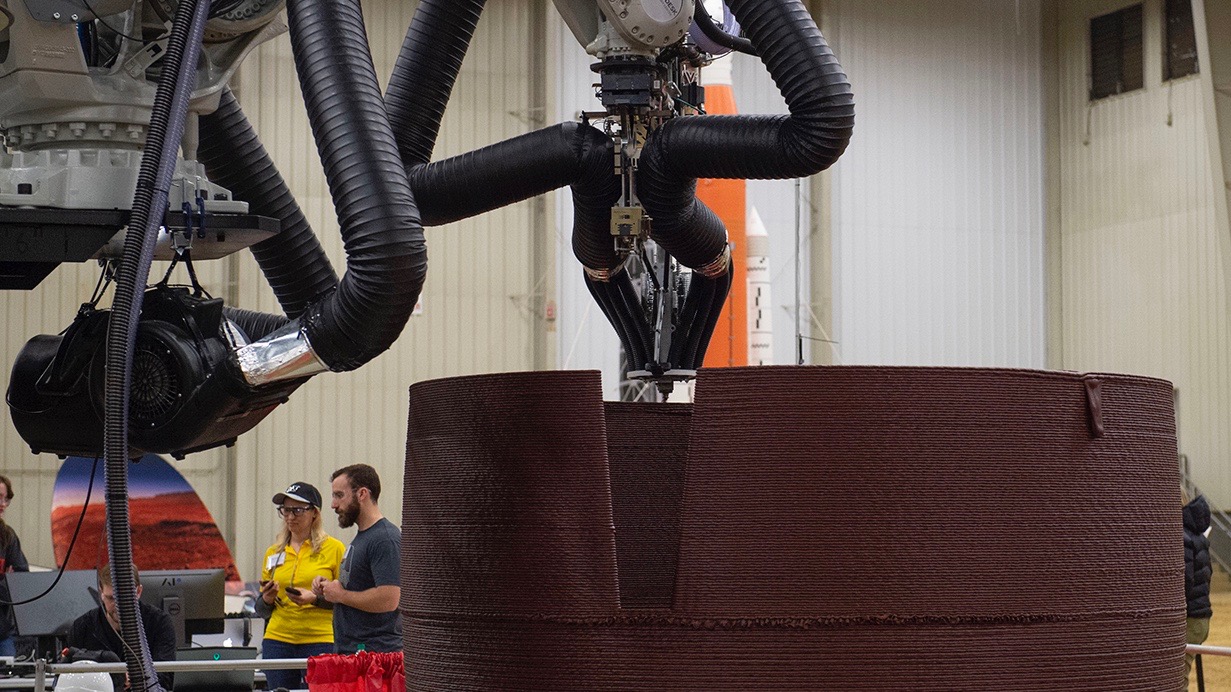NASA has selected 17 U.S. companies for 20 partnerships to mature industry-developed space technologies for the Moon and beyond. The NASA and industry teams will design a 3D printing system for NASA’s Artemis lunar exploration program, test a simple method for removing dust from planetary solar arrays, mature a first-stage rocket recovery system for a small satellite launch provider, and more.
Various NASA centers will work with the companies, ranging from small businesses and large aerospace companies to a previous NASA challenge winner, to provide expertise and access to the agency’s unique testing facilities. The partnerships aim to accelerate the development of emerging space capabilities.
“Space technology development doesn’t happen in a vacuum,” said Jim Reuter, the associate administrator for NASA’s Space Technology Mission Directorate (STMD), which made the selections and will manage the partnerships. “Whether companies are pursuing space ventures of their own or maturing cutting-edge systems to one day offer a new service to NASA, the agency is dedicated to helping bring new capabilities to market for our mutual benefit.”
NASA made the following selections through the 2020 Announcement of Collaboration Opportunity (ACO). The selected proposals are relevant to technology topic areas outlined in the solicitation, including cryogenic fluid management and propulsion; advanced propulsion; sustainable power; in-situ propellant and consumable production; intelligent/resilient systems and advanced robotics; advanced materials and structures; entry, descent, and landing; and small spacecraft technologies.
The selected companies are:
- Aerojet Rocketdyne Inc. of Redmond, Washington
- Ahmic Aerospace LLC of Oakwood, Ohio
- AI SpaceFactory Inc. of Secaucus, New Jersey
- Blue Origin LLC of Kent, Washington (two selections)
- Box Elder Innovations LLC of Corinne, Utah
- Cornerstone Research Group Inc. of Miamisburg, Ohio
- Elementum 3D Inc. of Erie, Colorado
- Gloyer-Taylor Laboratories LLC of Tullahoma, Tennessee
- IN Space LLC of West Lafayette, Indiana
- Orbital Sciences Corporation (Northrop Grumman Space Systems Inc.) of Dulles, Virginia
- pH Matter LLC of Columbus, Ohio
- Phase Four Inc. of El Segundo, California
- Rocket Lab USA Inc. of Long Beach, California
- Sensuron LLC of Austin, Texas
- Space Exploration Technologies Corp. (SpaceX) of Hawthorne, California
- Space Systems Loral Inc. (Maxar Technologies) of Palo Alto, California (three selections)
- Stellar Exploration Inc. of San Luis Obispo, California
The selections will result in unfunded Space Act Agreements between the companies and NASA. The period of performance will be negotiated for each agreement, with an expected duration of between 12 and 24 months. The total estimated value of agency resources to support the agreements is approximately $15.5 million.
A proposal under the advanced materials and structures topic has potential benefits on the Moon, Mars, and even Earth. AI SpaceFactory, an architectural and technology design firm and winner of NASA’s 3D Printed Habitat Challenge, will develop a new material that mimics lunar regolith, or dirt. Working with NASA’s Kennedy Space Center in Florida, the company will 3D print a test structure in a vacuum chamber that mimics environmental conditions on the Moon. The research could inform a 3D printing system for constructing large surface structures from in-situ materials on other worlds. On Earth, a locally sourced, high-performance 3D print material could benefit the construction industry by simplifying supply chains and reducing material waste.
SpaceX will partner with NASA’s Langley Research Center in Hampton, Virginia, to capture imagery and thermal measurements of its Starship vehicle during orbital re-entry over the Pacific Ocean. With the data, the company plans to advance a reusable thermal protection system, which protects the vehicle from aerodynamic heating, for missions returning from low-Earth orbit, the Moon, and Mars.
The Ohio-based small business Ahmic Aerospace will also mature new thermal protection systems by partnering with NASA’s Ames Research Center in California’s Silicon Valley. Ahmic will use Ames’ Arc Jet Complex to test hardware and collect data about how materials behave under ablative conditions.
For more information about NASA’s 2020 ACO selections, visit:
Through ACO, NASA helps reduce the development cost of technologies and accelerate the infusion of emerging commercial capabilities into space missions. These partnerships complement NASA’s Artemis program and help prepare the agency for its future exploration endeavors. With these agreements and NASA’s 2020 Tipping Point partnerships, STMD supports technology development needed to establish a sustainable presence on the Moon and for future crewed missions to Mars.
For more information about NASA space tech public-private partnership opportunities, visit:
-end-
Clare Skelly
Headquarters, Washington
clare.a.skelly@nasa.gov
202-358-4273



























